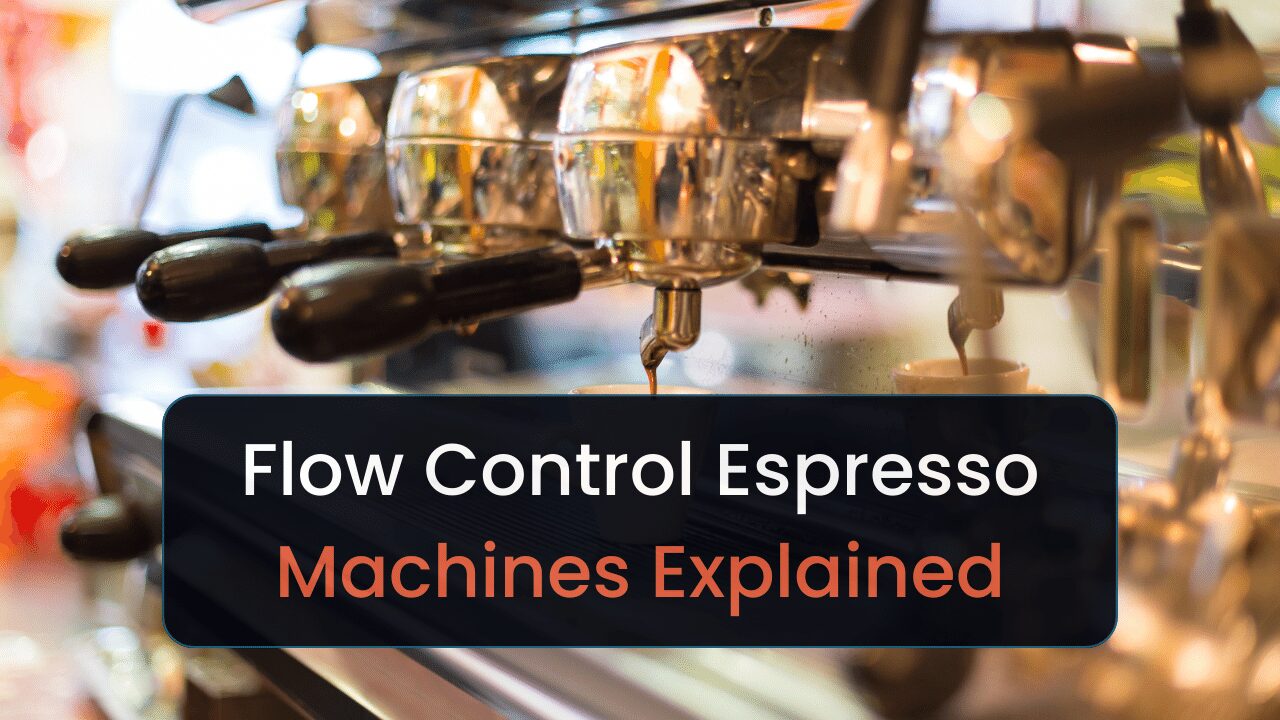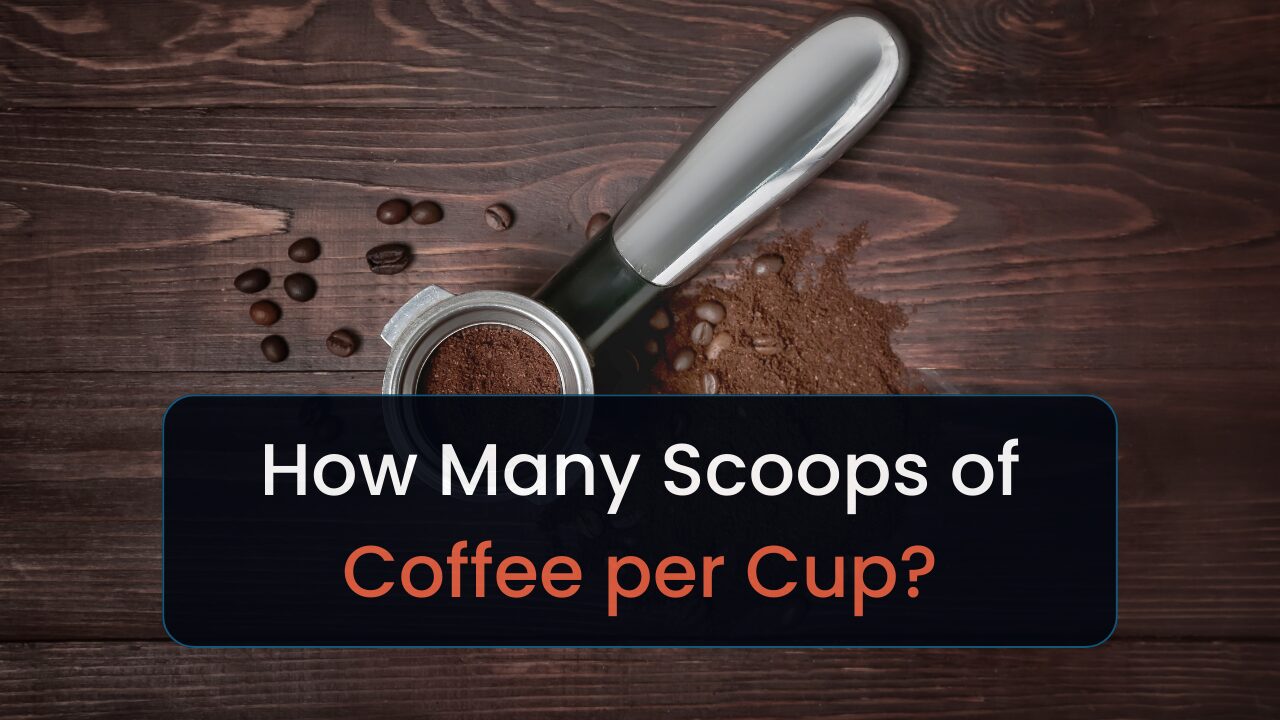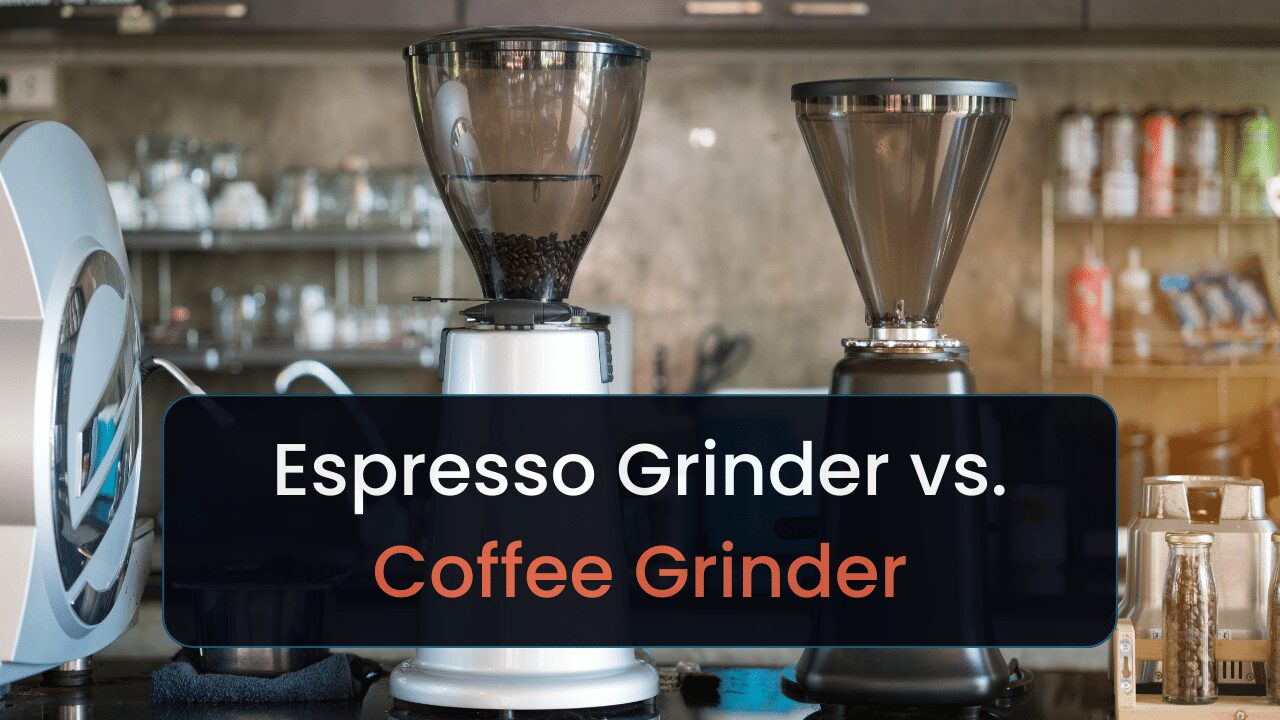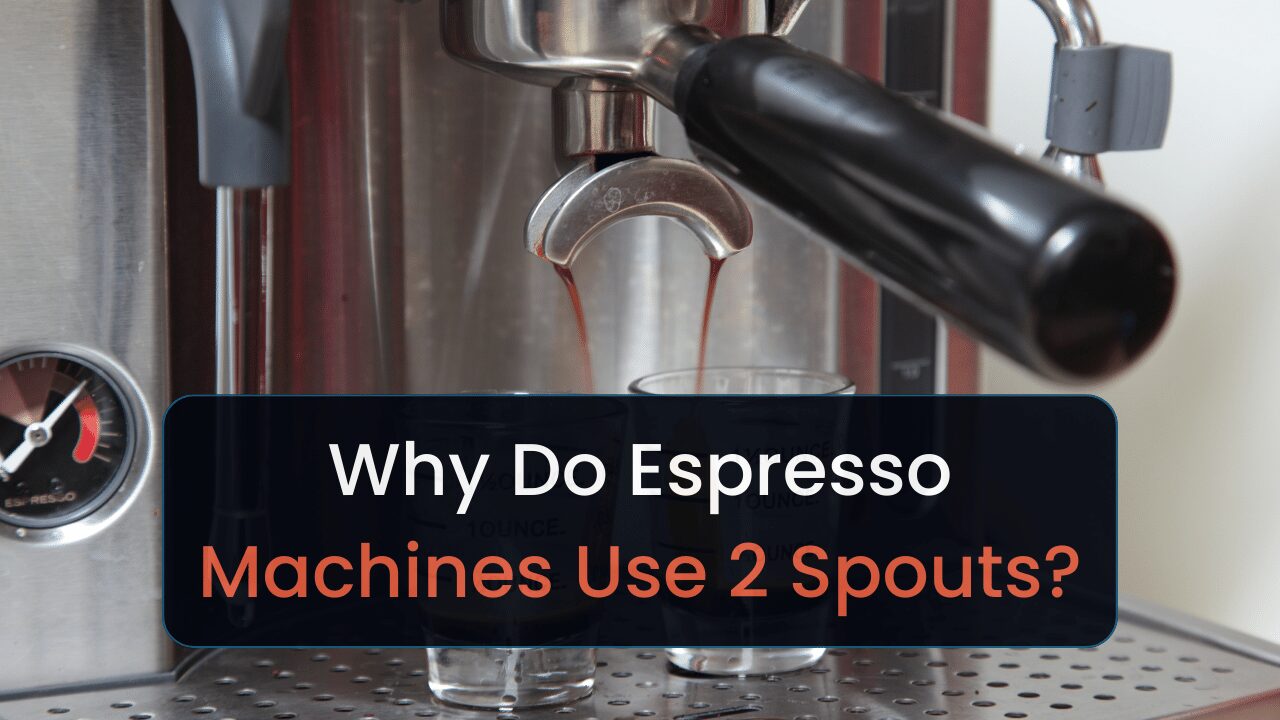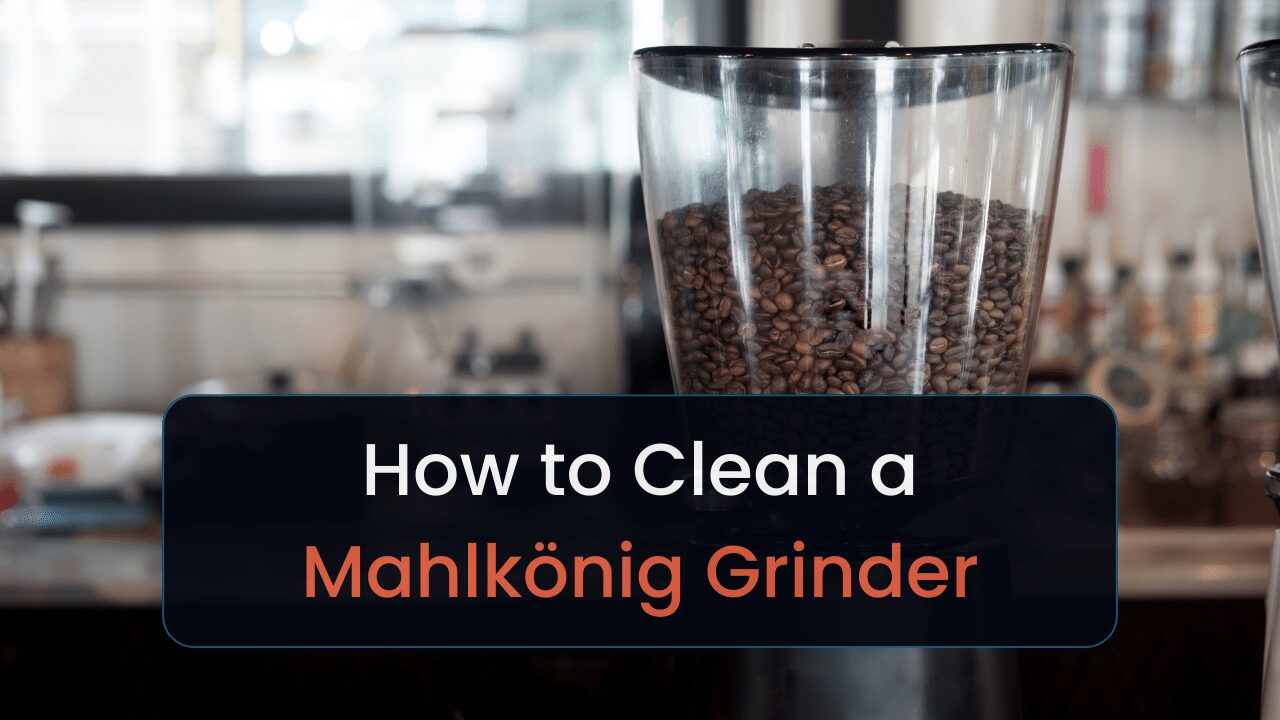This piece is an overview of the best automatic espresso tamper machines. Keep reading to learn more.
As an espresso enthusiast who wants to save time without sacrificing consistency, I’m always looking for ways to achieve this. That led me to learn about automatic espresso tampers. And now, I wrote this guide.
I chose the PUQpress Mini as the best overall because it’s a perfect fit for high-traffic coffee houses, stands, and trucks.
Unlike many other models on this list, it doesn’t have a limit on how many pounds of coffee it can grind per week. Making it the best choice for serving thousands of customers weekly.
Keep reading to learn more.
5 Best Automatic Espresso Tamper Machines Compared
| Machine | Best For | Price |
| PUQpress MINI | Overall | $760 |
| PUQpress M6 | Mythos grinders | $1,490 |
| PUQpress Q1 | Affordability | $940 |
| PUQpress M3 | Mahlkönig grinder owners | $1,390 |
| Mazzer Easy Tamper | Semi-automatic | $680 |
Do I Need an Automatic Espresso Tamper Machine?
You will want an automatic tamper machine if you’re running a coffee shop with a high capacity. They’re also a lifesaver for anyone—at home or in shops—who wants to prevent repetitive strain injuries.
Industry workers made over 84,000 claims to AmTrust (insurance company) between 2013 and 2017 due to repetitive strain injury, or barista wrist [1]. Many of these claims likely stemmed from baristas using traditional tampers to tamp coffee.
As doing this continually will negatively impact your wrist and elbows.
An automatic tamper machine will prevent such a damaging effect since the machine does all the work. They also aren’t that big of investments and will make an enormous difference by shaving seconds off the time it takes to make each drink.
Meanwhile, you’ll have more consistent-tasting drinks since every drink will have the same tamping force. And you’ll have happy baristas.
If you’re a small coffee stand or truck and don’t have enough money for one of these devices, consider a handleless tamper for improved ergonomics.
Anyway. Let’s move on to the best machines.
Best Automatic Espresso Tamper Machines for Businesses & Home
The following sections will compare various automatic and semi-automatic espresso tamper machines for business and home use.
I’ll present the following for each device:
- Specifications
- Pros and cons
- Who it’s best for
- Summary of features and expanding on pros and cons
Don’t stop reading this section. Important information incoming—
All the PUQpress machines include a 2-year warranty. However, some warranties will last up to a specific number of tamps. I’ll specify when that’s the case. All these devices also use 76 w of power and have a cycle duration of 1.3 seconds.
Most of their differences will come from size, tamper diameter range, and force adjustment range.
Let’s explore the first option.
1. PUQpress MINI: Best Overall
![5 Best Automatic Espresso Tamper Machines in [currentyear] 1 puqpress mini black side](https://timscoffee.com/wp-content/uploads/2023/11/puqpress-mini-black-side.png)
| Price | $760 |
| Dimensions (D × W × H) | 7.13 × 5.35 × 10.71 inches |
| Power | 76 w |
| Cycle Duration | 1.3 seconds |
| Tamper Diameter | 53.0 to 58.3 mm |
| Warranty | 2 years or 75,000 tamps |
Pros:
- Comes in black or white
- A lot of documentation
Cons:
- Not ideal for commercial settings
The PUQpress MINI works best for home baristas or small coffee carts without abundant space.
The MINI has a capacity of up to 4 pounds per week. Which makes it inconvenient for any business serving more than 250 espresso shots weekly.
It’ll apply 22–66 pounds of pressure. Not as much flexibility as the M6, but still applicable to most uses. Because when brewing at home or a small café, you’re likely using 20–30 pounds of force.
Unlike other machines on this list, you can select different colors. While it’s just black and white, it’ll fit your business or home’s aesthetic better than having a single color choice.
And most machines on this list don’t have much documentation or a community online. Since the MINI is more affordable, I’ve found more literature around this device. While it’s easy to use already, having additional resources is handy.
The MINI won’t work with all espresso machines, but here are the ones it will work with:
| Tamper Diameter | Compatible Brands/Machines |
| 58.3 mm | Kees van der Westen, La Marzocco, Synesso, Carimali, Conti, VST |
| 58 mm | Astoria, Bezzera, Cimbali, ECM, Expobar, Faema, Nuova Simonelli, Victoria Arduino, Wega |
| 57 mm | Unic |
| 56 mm | Aurora |
| 54 mm | Dalla Corta and San Marco |
| 53 mm | Spaziale |
I’ll provide more examples of brands certain tamper diameters will work with later in this guide.
Like all other PUQpress machines, it’s easy to operate. Set your weight and let the machine serve its purpose.
Do you need something that’s still affordable and has more power? Keep reading.
2. PUQpress M6: Best for Mythos Grinders
![5 Best Automatic Espresso Tamper Machines in [currentyear] 2 puqpress m6 black front](https://timscoffee.com/wp-content/uploads/2023/11/puqpress-m6-black-front.png)
| Price | $1,490 |
| Dimensions (D × W × H) | 14.76 × 7.68 × 5.43 in |
| Power | 76 w |
| Cycle Duration | 1.3 seconds |
| Tamper Diameter | 53.0 – 58.3 mm |
| Certifications | CB, CE, cETLus, KTC, EAC, ETL sanitation |
Pros:
- Simple operation
- Quick
- Has tamping profiles
Cons:
- Expensive
The PUQpress M6 is best for high-traffic coffee shops, restaurants, coffee carts, trucks, and at-home enthusiasts using grinders from the Victoria Arduino’s Mythos line.
Those who get this device will mount grinders from the Victoria Arduino’s Mythos line—MY 75 (G) and MY 85 (G)—on top of this device.
Here’s an image of how it’ll look:
Such a feature limits your grinder choices, but it saves space. You could use it for other grinders, but I wouldn’t recommend it. Since this one’s so wide and deep. You’re better off with the Q1 or M3 models, which I’ll cover later.
This thing’s expensive. But it’s worth it if you want to automate tamping and reduce downtime and inconsistent tampers from your barista. It could even prevent them from damaging their wrist, saving you from dealing with a claim.
Manually tamping coffee grounds could take you or a barista 15–30 seconds to ensure you’re using a good technique and are applying a good amount of pressure. The M6 will do that in 1.3 seconds.
And since you’re shaving at least 12 seconds off making each drink, that allows baristas to serve more drinks quicker.
It has an 11–66 pound pressure range, which gives you plenty of flexibility on how much weight you want to apply on your grounds. Or use one of the presets:
- Soft Tamp
- Hulk Tamp
- Fast Tamp
What do these tamping profiles mean? I couldn’t find any information.
I’d imagine Soft doesn’t apply much pressure. Hulk mashes your coffee grounds. And Fast quickly tamps your grounds. I did find that these tamping profiles make the type of drink you want taste better.
For instance, a harder and slower tamp will work better for a flat white drink since it slows flow rate.
When pressing each profile, the machine will show the pounds of pressure it’ll apply. Meaning you won’t need to guess the amount of force it’s applying.
Otherwise, this machine’s simple to operate. You set your desired pressure, plug your portafilter into the device, and let it tamp.
I’d choose this machine if you use a Mythos 1 or 2 and don’t want the restrictions many other machines on this list have with the warranty. For instance, the PUQpress MINI’s warranty will last 2 years or 75,000 tamps.
The warranty for the M6 won’t expire after applying a certain amount of tamps.
Is this device too big for your workspace? I have an alternative.
3. PUQpress Q1: Most Affordable for Businesses
![5 Best Automatic Espresso Tamper Machines in [currentyear] 4 puqpress q1 black side 1](https://timscoffee.com/wp-content/uploads/2023/11/puqpress-q1-black-side-1.png)
| Price | $940 |
| Dimensions (D × W × H) | 7.68 × 5.55 × 11.26 inches |
| Power | 76 w |
| Cycle Duration | 1.3 seconds |
| Tamper Diameter | 53.0 – 58.3 mm |
| Warranty | 2 years or 200,000 tamps |
| Certifications | CB, CE, cETLus, KTC, EAC, NSF-8, PSE |
Pros:
- Works fine as a standalone tamper
- Warranty expires after 200,000 tamps
Cons:
- Pricey
The PUQpress Q1 is ideal for restaurants, cafés, coffee shops, and home baristas who want a standalone tamping device that works with any coffee grinder.
This tamper will work with any grinder, since you don’t need to mount anything on top of it. Just place it on your countertop.
Looking at the price, you’ll see what I fibbed a bit. The PUQpress MINI is more affordable than this one but is not applicable for commercial use. This one is.
It’ll tamp 10 times the amount the MINI can tamp per week (22 pounds). Meaning, it would allow you to make around 2,500 drinks. That’s great for coffee shops, stands, or trucks with fewer than 300 customers daily.
This machine also isn’t ideal for high-traffic environments because the warranty will explore after 200,000 tamps. If you maximize the amount of tamps this machine can do weekly, then you’ll burn through your warranty validity quickly.
Like the MINI, it’ll press between 22 and 66 pounds. Not as many options as the M6, but it should still suffice for most purposes.
Want a tamper that’ll support more people? Then keep reading.
4. PUQpress M3: Best for Mahlkönig Grinder Owners
![5 Best Automatic Espresso Tamper Machines in [currentyear] 5 puqpress m3 black profile](https://timscoffee.com/wp-content/uploads/2023/11/puqpress-m3-black-profile.png)
| Price | $1,390 |
| Dimensions (D × W × H) | 15 × 7.3 × 6.7 inches |
| Power | 76 w |
| Cycle Duration | 1.3 seconds |
| Tamper Diameter | All |
| Certifications | CB, CE, cETLus, KTC, EAC, NSF-8 |
Pros:
- Speedy
- Less of a chance for wrist injury
Cons:
- Expensive
- Not many grinder options
The PUQpress M3 works best for coffee shops, carts, stands, and trucks who want to place it under a Mahlkönig E65S or E65S GBW.
If you have Mahlkönig’s E80 range (E80 Supreme and E80 GBW) you should get the PUQpress M5.
The M3 is a more affordable version of the M6, but for different grinders. You can set the pressure between 11 and 66 pounds, which offers more flexibility than the MINI and Q1 models.
This model has the same speed as all the other models, 1.3 seconds. Making it an excellent robot assistant to have behind your counter. And since it does all the work, there’s no chance you or your barista will suffer from repetitive strain injuries.
But it’ll only “fit” on 2 grinders. It doesn’t mean it won’t function at all. But it would look awkward if you don’t have a grinder attached. You may not have found a model on this list that fits your grinder.
This is the last “automatic” device I’ll cover on the list. If you find yourself disappointed, I recommend considering the PUQpress Q2. It doesn’t require a specific grinder. And, it’ll work in commercial settings due to its flexibility and limitless use.
If you want to try your luck and see if other under-grinder options will work, check out all the other PUQpress models we carry.
Perhaps you’re after a semi-automatic model. Check out our last pick.
5. Mazzer Easy Tamper: Best Semi-Automatic Espresso Tamper
![5 Best Automatic Espresso Tamper Machines in [currentyear] 6 mazzer easy tamper side](https://timscoffee.com/wp-content/uploads/2023/11/mazzer-easy-tamper-side.png)
| Price | $680 |
| Dimensions (D × W × H) | 6.2 × 5.11 × 14.5 inches |
| Power | NA |
| Cycle Duration | NA |
| Tamper Diameter | 53, 54.5, and 57.5 |
Pros:
- Most affordable
- Will last a long time
Cons:
- Not automatic
- Requires more effort to use
The Mazzer Easy Tamper is best for home coffee users or small coffee shops that want an affordable tamping device that requires manual input.
The Easy Tamper uses a lever to tamp your beans instead of a motor. Meaning, you must constantly pull down on a handle.
Does that mean buying compared to a machine like the PUQpress is impractical? Not necessarily.
Semi-automatic devices like the Easy Tamper work better for folks who want more control over their tamp. Yet, they don’t want to learn a specific pose or tamping position when using a traditional tamper.
They’re not as ergonomic as automatic tampers but more durable since they don’t have as many moving parts.
They will require much more effort to use, since you’ll need to figure out how much pressure you’re applying. You don’t have a robot assistant doing all the work for you. Making it impractical for commercial use.
Unless you don’t mind people waiting a while for their coffee.
Automatic machines cost much more, but are easier to use. Devices like the PUQpress Mini cost nearly as much as the Easy Tamper, yet offer automation.
Whatever device you choose depends on your preferences.
Speaking of preferences. This buying guide will help you figure out what makes for a great tamping device.
Espresso Tamper Buying Guide
Here’s what you’ll need to consider when shopping for an automatic espresso tamping machine:
| Factor | Description |
| Tamper Size | Whether the portafilter will fit in your machine. |
| Manual vs. Automatic Tamper | Determines cost and automation of the machine. |
| Convex vs. Flat Tamper | Tamper shape. |
| Compatible Grinder | Whether you can mount a grinder on it. |
I’ll provide more details about these factors throughout the following sections. Then you’ll know whether you’re getting the right tamper.
Let’s begin.
1. Tamper Size
Not all automatic tamping machines will support all tamper sizes. For instance, the PUQpress MINI supports 58.3, 57.3, 54.3, and 53 millimeter portafilters.
Here’s a reference as to how big portafilters are for certain espresso machines:
- 49 mm: The smallest portafilter size.
- 51 mm: Uncommon.
- 52 mm: Uncommon.
- 53 mm: A popular size for entry-level and mid-range espresso machines.
- 54 mm: A less common size, but found on some models of espresso machines, such as the Breville Bambino Plus.
- 56 mm: Uncommon.
- 57 mm: Uncommon.
- 58 mm: The largest portafilter size and the standard for commercial espresso machines & many high-end home machines.
And here are a bunch of home espresso machines these sizes are common for:
| Tamper Size | Brand/Machine |
| 58 mm | Breville (Dual Boiler, BES900XL & BES920XL) |
| ECM Botticelli | |
| ECM Cellini, Giotto | |
| Espressione café Retro, café Novecento | |
| Gaggia (semi-auto machines) | |
| KitchenAid Proline | |
| La Valentina | |
| Pasquini Livia 90 | |
| Quick Mill | |
| Rancilio Silvia | |
| 57 mm | Ascaso |
| Francis!Francis! X3 | |
| 56 mm | Francis!Francis! X1 (new ver.) |
| 55 mm | Mokita |
| 53 mm | Breville Barista Express, BES870XL & BES860XL, Infuser, BES840XL, and Duo-Temp Pro, BES810BSS |
| Estro | |
| Faema Family | |
| La Pavoni Lusso, Pisa, Si | |
| La Spaziale | |
| Mypressi Twist | |
| Saeco | |
| Solis | |
| Starbucks Barista | |
| 52 mm | Francis!Francis! X1 (old version) |
| 51 mm | Bodum Granos |
| Breville (800 Series | |
| Cuisinart | |
| Delonghi (newer machines) | |
| Gaggia Factory (lever machines) | |
| La Pavoni lever machines (1999 and newer) | |
| 49 mm | Delonghi (older machines) |
| La Pavoni lever machines (pre 1999) | |
| Olympia Club, Cremina, Express |
Almost all major commercial brands will use 58 mm portafilters except for the following:
- 57 mm: Cimbali
- 56 mm: Astra, Aurora, Reneka, and Unic.
- 55 mm: San Marco
- 52 mm: Spaziale and La Spaziale
- 49 mm: Olympia Cremina
Check your espresso machine’s manual to find out how large its portafilter is. Otherwise, refer to this list or the sections earlier.
Let’s move onto the next factor.
Summary:
Buy a tamper that supports your portafilter’s size.
2. Manual vs. Automatic
Automatic tampers will work best for any coffee shop that wants to ensure consistency with tamping and save time when tamping. Such a device is also better for folks who want to prevent repetitive strain injuries (otherwise, barista wrist).
Since the machine does all the work.
A flat handle-less tamper could also prevent such strain, but still carries all the other weaknesses associated with manual tamping [2].
Manual tamping refers to the user compressing grounds into a portafilter basket.
Pros:
- Gives the user more control over the tamping pressure.
- Can be used to create a variety of tamping techniques.
- More affordable.
Cons:
- Requires practice to achieve a consistent tamper.
- Can be difficult to get a level tamp.
- Can be frustrating for beginners.
Automatic (or semi-automatic) tampers are machines that use motors or levers to compress coffee grounds into your portafilter.
Pros:
- Easier to use than manual tampers.
- Guaranteed to produce a consistent tamp.
- Can save time.
- Prevents barista wrist
Cons:
- Takes away some control from the user.
- More expensive than manual tampers.
- May not be as effective as manual tamping for experienced users.
If you don’t mind paying a bit of extra money, automatic tampers are worth the extra cost.
Summary:
Manual tampers cost less but aren’t as consistent as automatic tampers.
3. Convex vs. Flat
Here’s a quick comparison of convex and flat tampers:
| Tamper | Flat | Convex |
| Taste | Better | Not as good |
| Shape | Flat | Rounded |
| Extraction | More | Less |
| Beginner-friendly? | Yes | No |
| Channeling Prevention | Worse | Better |
Most home baristas and coffee shops will want flat tampers. They’re easier to find, more affordable, and often offer better extraction rates [3].
Convex tampers surpass their counterparts in their ability to prevent espresso channeling. A phenomenon when water finds paths of the least resistance in your espresso puck, resulting in uneven extraction.
However, many other methods will prevent espresso from channeling. For instance, using a WDT tool to break up clumps of grounds.
Let’s move on to the differences between these tampers.
A flat tamper has a flat, even surface.
Pros of flat tampers include:
- More flavorful coffee: More extraction results in great-tasting coffee.
- Better for beginners: No learning curve to building a technique.
- Widely available: Easy to find.
Cons of using this type of tamper include:
- Not as aesthetically pleasing: Some people prefer the look of convex tampers.
- Prone to espresso channeling: Water may channel between basket edge & packed grounds.
A convex tamper has a slightly curved surface.
Advantages of using convex tampers include:
- Helps prevent side-channeling: Prevents water from seeping downsides of baskets.
- Faster extraction: A thinner center can lead to slightly faster espresso extraction.
- Could reduce espresso spritzing: Espresso flows more evenly through grounds in the thinner center of the puck.
Disadvantages of using convex tampers include:
- Can create a weaker espresso shot if not used properly. If a convex tamper is not used properly, it can create a weaker espresso shot.
- More difficult to use: More difficult to apply even pressure to the coffee grounds.
Summary:
If you are a beginner, a flat tamper is a good option. As you become more experienced, you may want to experiment with a convex tamper to see if you prefer it. But most folks will benefit from a flat tamper, regardless.
4. Compatible Grinder
Many automatic tampers require the user to place a compatible grinder on top of it for it to work. For instance, the PUQpress M2 will only fit under Mythos 1 and 2 coffee grinders.
Does this mean that the automatic tamper won’t work if you don’t have the specific grinder? No. It’ll just look awkward on your countertop without a grinder on top of it.
However, many models (e.g., PUQpress MINI) are standalone and won’t create a weird aesthetic if you don’t have a particular grinder.
I mentioned grinder requirements for all the machines in this list (if any). If you opt for a device not found in this guide, ensure you research whether it requires a specific grinder.
That’s all.
FAQs for Espresso Tampers
Keep reading to learn more about finding espresso tampers for your home or shop.
How Hard Should I Tamp Espresso Grounds?
Baristas recommend applying as high as 30 pounds of pressure when tamping grounds [4]. Some will do as little as 20 pounds.
Conclusion
Here’s an overview of our top 3 picks:
- PUQpress MINI: Suitable for home use.
- PUQpress M6: Most flexibility with pressure it can apply.
- PUQpress Q1: Balances affordability and flexibility.
The PUQpress MINI takes the cake because it works great for home environments and doesn’t require a specific grinder to look good.
Are you setting up a coffee shop, stand, or truck? Explore a checklist we wrote to help you get started.

